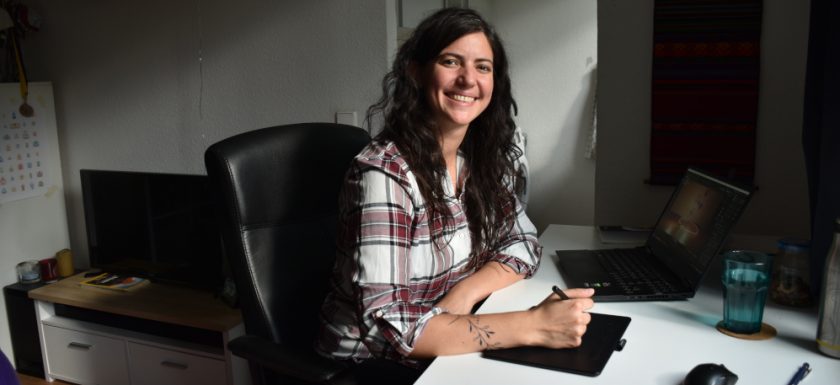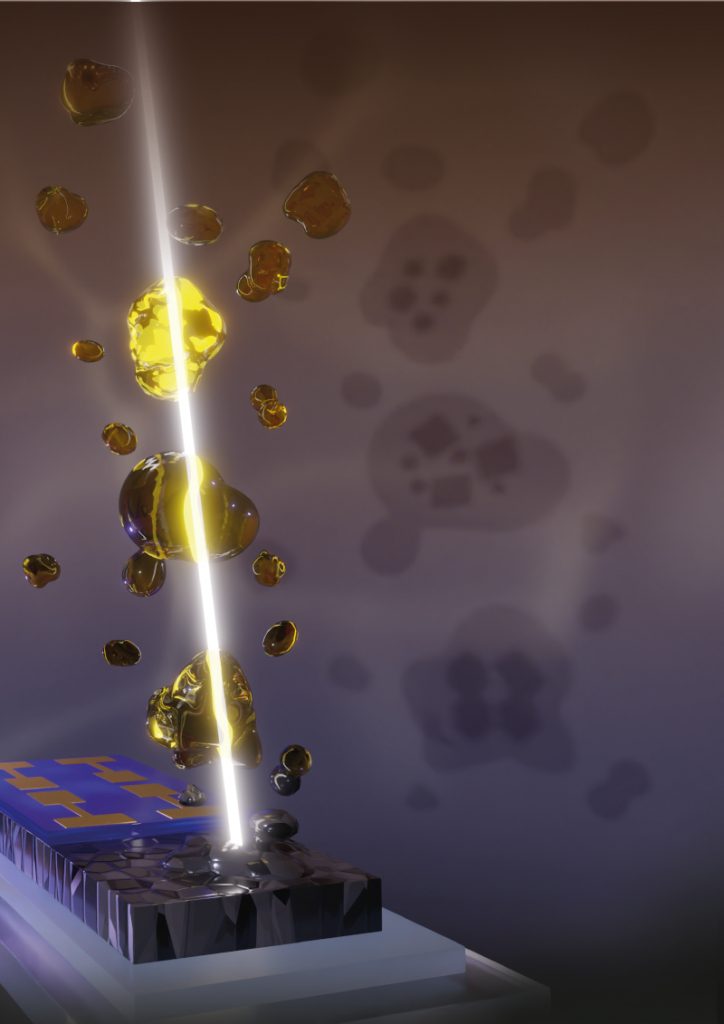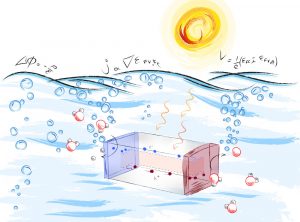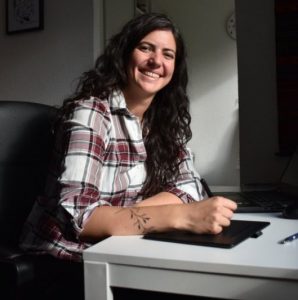
Laura Canil discovered her passion for visual science communication while working on her PhD at HZB. First, she illustrated her own results, then those of her colleagues. Now, she is ready to work for other scientific teams. An interview with Laura about her career choice as a freelance scientific illustrator.
Going from working in a lab to being an illustrator is quite a change. Why did you study physics in the first place?
Laura: I’ve always been curious about the mechanisms that make our universe work, so I decided to study physics. I did my bachelor and master at the University of Padova in Italy and my master thesis at the AMOLF Institute in Amsterdam with a project on silicon nanostructures for photovoltaic applications. I really liked working in the renewable energy field because it was giving me the opportunity to do something good for the world and the climate change crisis. So for my doctorate I continued to work on photovoltaics with Antonio Abate’s group at HZB. In 2022 I obtained my PhD with a thesis on tuning the interfacial properties of perovskite solar cells.
How did you decide what to do next?

During the PhD I felt that, even if I liked working in the lab, the academic life was not what I wanted for my future. While preparing scientific presentations and publications, I realized that I really liked to work on their aesthetic part. I liked to find the best way to communicate my results in a clear but also attractive way. It was coming natural for me to take complex ideas and make them simple, especially through visual representations. With this in mind, I started to look around to find a job that would allow me to exploit this passion. I wanted to stay in touch with science, but from a visual communication point of view. And I wanted to contribute to something that is often lacking: a clear but engaging visual representation of scientific ideas and results.
Did you know other scientific illustrators?
Not at first, I didn’t even know it was an actual job. But then I discovered the website of Thomas Splettstößer, a professional scientific illustrator. It was eye-opening! Not only I found out that this is a possible career, but I also related a lot with the description in his biography: he also did a PhD, during which he realized his passion for the visual representation of science. I actually had the chance to meet him in person later on. We had an interesting discussion about this career path, he was very helpful and open to answer all my questions.
What were your first steps?

I started with making illustrations for myself. I made a cover for a paper I wrote, for my PhD thesis and for that of friends. Then I started to work on some small projects for colleagues, while learning how to use design software on the side. I started using Adobe Illustrator and a little bit of Blender while I was doing my PhD. After I finished it, I could intensify the learning process. I learned from scratch Illustrator and Photoshop for 2D illustrations and Blender for 3D. Mostly from online courses on Udemy and tutorials on YouTube. It was an intensive but satisfying process. I also invested in a computer fast enough to handle 3D renderings. And I had to buy a good monitor and the licence for the Adobe Creative Suite.
Could you describe your approach to developing a really good illustration?
First, I have to understand what the message is. It is important to keep it simple, not to overload the illustration. So I have a chat with the scientist in charge, we talk about the idea for the image, what we want to convey, but we also discuss style, purpose and deadlines. Then it goes back and forth between us, with me working on the illustration and the scientist giving me feedbacks. Sometimes it takes a lot of tweaking before reaching a result we are happy with. But obtaining in the end an image that is both scientifically sound and aesthetically attractive gives always a lot of satisfaction.
How can scientists find you?
My website is now up and running and I’m also building my web presence by showing my work on social media channels. I think I am now ready to start working and I am really looking forward to interesting clients and challenging assignments.
Finally, what would your inner child say about your career path?
As a child I wanted to be an inventor and then a painter. It seems that I have now found a way to be both.
Thank you, Laura! And we wish you a successful start!

Website: https://www.canilvisuals.com/
Contact: laura.canil@canilvisuals.com
Profile on Instagram: https://www.instagram.com/canilvisuals/
Twitter: https://twitter.com/laura_canil
Linkedin: https://www.linkedin.com/in/laura-canil-8a203819b/
Note: Laura Canil is born in Venice, Italy. She studied physics at the university of Padova and did her master thesis project in Amsterdam. She joined the team of Antonio Abate at HZB in March 2018 and finished her PhD in Spring 2022 with a thesis on the interfacial properties of perovskite solar cells.

